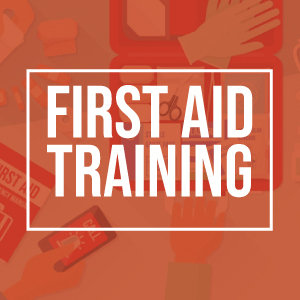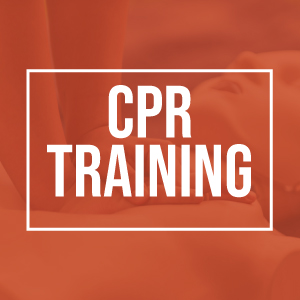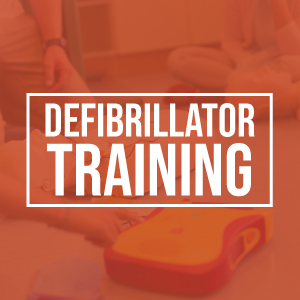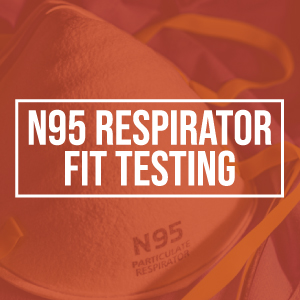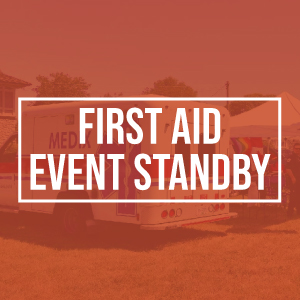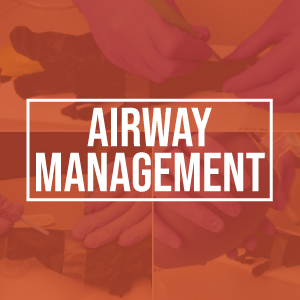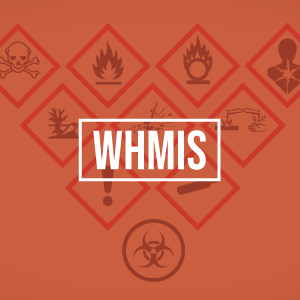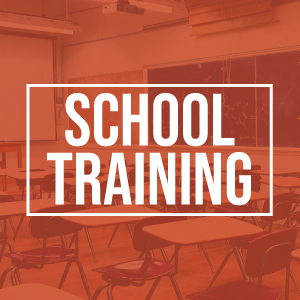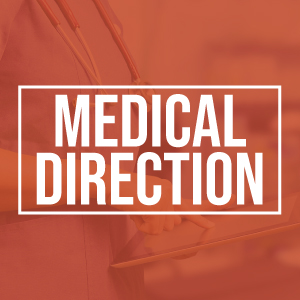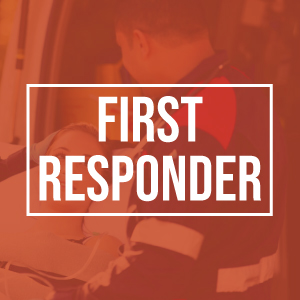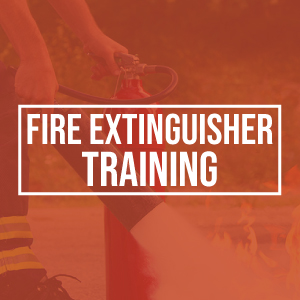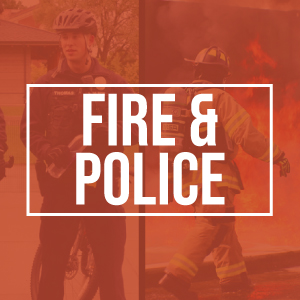CPR
Cardiac arrest is one of the leading causes of death among adults aged 18–65. In Canada, approximately 60,000 out-of-hospital cardiac arrests occur each year—about one every nine minutes—with only 1 in 10 patients surviving, according to the Heart and Stroke Foundation of Canada and Global News. In the United States, the numbers are even more sobering, with estimates ranging from 350,000 to over 400,000 sudden cardiac deaths annually, as reported by SCA-Aware, CPR.Heart.org, and the American Heart Journal. These statistics highlight how essential effective CPR training is in improving survival outcomes.
At Second Chance CPR, our programs are aligned with the latest ILCOR standards, fully compliant—and in many cases exceeding—the requirements of CSA Z1210:17 and WSIB Regulation 1101, and are taught by instructors with extensive real-world, life-saving experience.
The courses include information on appropriate rescue techniques for patients of all ages as well as critical information on heart disease, stroke, risk factors, prudent heart living and heart and lung function. Students will learn the signs of heart attack, stroke, and choking emergencies, as well as treatment of respiratory emergencies on how to utilize barrier devices with the use of bag-valve mask (BVM) on adult, child and pediatric patients.
Courses offered:
CPR Level A is designed for individuals who only need to know how to respond to adult emergencies. It teaches adult CPR, choking relief, and AED use, making it ideal for general workplace staff, corporate employees, and members of the public.
CPR Level C expands these skills to cover adults, children, and infants. It includes CPR and choking procedures for all ages, along with AED training, and is well-suited for teachers, childcare providers, coaches, fitness instructors, and community program staff.
CPR – BLS (Basic Life Support) provides the highest level of training, intended for healthcare professionals and first responders. It covers team-based resuscitation, advanced airway management, bag-valve-mask use, oxygen administration, and high-performance CPR with AED integration. This level is essential for nurses, paramedics, firefighters, police officers, corporate security guards, dental professionals, and medical students preparing to enter clinical practice.
First Aid
At Second Chance CPR, our experienced instructors teach employees that First Aid training can often reduce the severity of workplace injuries. Every day, hundreds of injuries occur, ranging from something as minor as a cut to the finger to as serious as a chemical burn. Such injuries can be painful and may limit an employee’s ability to work safely. That’s why our courses, delivered by professional instructors with real-world experience, are designed to prepare staff to respond quickly and effectively.
Second Chance CPR is proud to be a recognized provider of First Aid training under Regulation 1101 of the Workplace Safety and Insurance Board of Ontario. All courses also follow the standards as set out in the CSA Z1210:17 First Aid Training in the Workplace, as well as CSA Z1220:17 First Aid kits for the workplace guidelines.
With the introduction of the CSA Z1210:17 standard, course naming and classifications have been updated to Basic, Intermediate, and Advanced levels. All of our programs now reflect these CSA standards while maintaining full compliance with WSIB requirements, ensuring consistent, high-quality training for every workplace.
Standard First Aid – First Aid Intermediate (CSA Z1210:17)
| This course prepares participants to manage a wide range of medical emergencies and provide sustained care until professional help arrives. Under Ontario’s Workplace Safety and Insurance Board (WSIB) Regulation 1101, workplaces with six or more employees per shift are required to have at least one worker on site who holds a valid Standard First Aid certificate. This program fulfills that requirement. Second Chance CPR is a recognized WSIB-approved provider, and this training is widely used by healthcare professionals and students entering careers in Nursing, Policing, Firefighting, Dental Assisting, and other health-related fields.
All courses include an Emergency Action Guide (First Aid Booklet), Wallet cards, and printed wall Certificates for courses attended. The participants will also receive a single use Face Shield (CPR barrier device). |
||
| Courses include the following topics: Bleeding and Wound Management
Muscular/Skeletal Emergencies Head & Spinal Emergencies Respiratory Emergencies Optional AED Module |
Burns
Seizures Diabetic Emergencies Poisoning Triage |
Airway
Breathing Circulation Rescue Breathing CPR Skills Heart Attack & Stroke Choking (conscious/unconscious) |
Emergency First Aid – First Aid Basic (CSA Z1210:17)
This course teaches participants how to respond effectively to medical emergencies, providing immediate care until professional help arrives. Under Ontario’s Workplace Safety and Insurance Board (WSIB) Regulation 1101, workplaces with five or fewer employees per shift are required to have at least one worker on site who holds a valid Emergency First Aid certificate. This program fulfills that requirement.
The course covers the mandatory competencies outlined in the First Aid – Basic level of CSA Z1210:17 – First aid training for the workplace – Curriculum and quality management for training agencies, ensuring your certification is nationally standardized and fully compliant.
Your instructor will be a seasoned professional with years of field experience, bringing both practical expertise and engaging instruction. We also provide flexible scheduling to meet your workplace needs.
Each class is customized to the site-specific requirements of your organization. Instructors ensure that employees are familiar with available safety equipment and know how to use it effectively, making the training practical, relevant, and directly applicable to your work environment.
First Aid Courses offered:
- Standard/Intermediate First Aid Initial Program (16 Hrs.)
- Standard/Intermediate First Aid Recertification (8Hrs.)
- Emergency/Basic First Aid Initial Program (8Hrs.)
*Course times may vary depending on CPR Level (A, C, BLS)
Defibrillation
Automated External Defibrillators are quickly becoming common place in facilities, factories and gathering places in Windsor and Essex County as well as world wide because it is being recognized as the single most important contributing factor of survival. AED’s increase a victims chance of survival at the scene prior to Emergency Responders arriving.
These machines can be found in schools and institutions, retail stores and community centres throuout the region. The AED training class is designed to teach students the who, what, when, why, where, and how of Defibrillation. With CPR and AED training, a victims chances of survival are dramatically increased when the patient faces Sudden Cardiac Arrest and an AED is present. This class is generally incorporated into the CPR training course with minimal impact on time.
This year we are pleased to announce the addition of the LIFEPAK CR2 training to our list of available programs that target Public Access Defibrillator Responders. This is the newest unit with the latest technology in AED’s on the market.
Second Chance CPR also offers the LIFEPAK 1000 AED for Corporate Security, and Health Sector Employees, while also offering training programs for Public Access Defibrillator Responders utilizing the LIFEPAK CRPlus. This unit is the preferred AED being utilized throughout Essex and Kent County for the Public Access Defibrillator Program. Second Chance CPR has also developed training programs for other AED manufacturers. For more information and to see a list of available programs, please contact us.
Schools
Second Chance CPR (SCCPR) has been a proud partner of our local school boards for more than 30 years, supporting initiatives that teach students these vital life-saving skills. We provide CPR, FIRST AID and AED training as well as First Responder services across Windsor and Essex County. Our partnerships include the Greater Essex County District School Board (GECDSB), the Windsor-Essex Catholic District School Board (WECDSB), and the Conseil scolaire catholique Providence.
Through the Specialist High Skills Major (SHSM) program and other school-based initiatives, SCCPR has helped thousands of students across Windsor-Essex gain hands-on training in CPR, FIRST AID and AED use. Skills that can make the difference in a life.
Many of our instructors are registered with the Ontario College of Teachers, and every instructor holds a valid Police Clearance Certificate. In addition, all are fully screened through the Ontario Education Services Corporation (OESC) under the Ministry of Education, ensuring the highest level of trust and professionalism in working with students and staff.
Police & Fire
Second Chance CPR (SCCPR) is proud to be the training provider for Fire Departments and Police Services throughout Windsor and Essex County, as well as the program provider for FESTI (Fire and Emergency Services Training Institute), Billy Bishop Airport, and large corporations like Caesars Windsor.
In addition to core CPR, AED and First Aid instruction, we specialize in creating scenario-based training that reflects the unique challenges faced by first responders and security professionals. Police, Fire, and Security personnel are responsible for a wide range of critical tasks. From responding to emergencies and ensuring scene safety to report writing and incident documentation. Our training programs are designed to prepare them for this full spectrum of responsibilities, combining hands-on medical skills with the practical decision-making and communication skills required in real-world situations.
Examples of our scenario-based training include:
-
A team approach responding to a medical emergency at a large venue.
-
A response to an unconscious employee due to an opioid overdose at an industrial workplace.
-
An in-custody medical emergency within a police or correctional setting.
-
A cardiac arrest in a high-traffic public space, like an airport or community centre.
By incorporating these realistic scenarios, we ensure trainees gain not only the technical ability to provide life-saving care but also the confidence to manage complex, high-pressure incidents with professionalism and efficiency.
First Responder
Second Chance CPR offers trusted First Aid Standby services to ensure the safety of participants at community and corporate events. In partnership with MEDEVAQ Consultants, we’ve also developed a comprehensive Medical First Responder course designed to prepare individuals for real-life emergencies. For more details or to book services, please contact us at 519-977-7017.
Airway Management
This course is designed to provide additional training for those interested in furthering their knowledge and response capabilities
when dealing with medical emergencies. As well as further supplementing their CPR, First Aid and Defibrillation training.
About the Course:
* 2 year Certification under Medical Direction
* approx. 4 Hour Course
* Prerequisite: Current CPR Certificate or current recognized equivallent
Course Content :
- Introduction to the course
- Recognition and Treatment of respiratory emergencies
- Use of bag-valve mask (BVM), adult, child, pediatric
- Resuscitation mask, suction equipment, Oxygen regulators, and other ventillation devices
- Demonstration of the stages in the administration of emergency oxygen
- Oxygen Tank, Oxygen Regulators, Airways, Standard Oxygen Kits will be used in the course
This course meets and exceeds the ILCOR guidelines
Global Harmonized System (GHS) / WHMIS (Workplace Hazardous Materials Information System)
The Workplace Hazardous Materials Information System (WHMIS) is Canada’s national hazard communication standard. It ensures that workers who use, handle, store, or dispose of hazardous materials (controlled products) have the information they need to do so safely.
WHMIS has been aligned with the Globally Harmonized System of Classification and Labelling of Chemicals (GHS) through the Hazardous Products Act and the Hazardous Products Regulations (HPR), administered by Health Canada.
Major Updates & Compliance Dates
-
February 11, 2015 – The Government of Canada published the amended HPR, officially transitioning Canada from WHMIS 1988 to WHMIS 2015.
-
December 1, 2018 – Full implementation of WHMIS 2015 across Canada was completed.
-
December 15, 2022 – Amendments to the HPR came into force to align with GHS (7th edition and parts of 8th).
-
December 14, 2025 – Transition period ends; all suppliers, distributors, and employers must fully update labels, Safety Data Sheets (SDSs), and training to meet the new requirements.
-
December 15, 2025 – Full compliance with WHMIS 2022 is mandatory.
Key Changes in WHMIS 2022
-
New hazard class: Chemicals Under Pressure.
-
Expanded aerosol categories, including a non-flammable category.
-
Revised Flammable Gases classifications (Categories 1A and 1B).
-
Stricter and more detailed requirements for Safety Data Sheets (SDS) content.
Roles & Responsibilities
Suppliers must:
-
Determine whether their products are hazardous.
-
Prepare and provide compliant labels and SDSs to purchasers.
Employers must:
-
Educate and train workers on hazardous products used in the workplace.
-
Ensure all hazardous products are properly labeled.
-
Provide and maintain workplace labels and SDSs where needed.
-
Review WHMIS programs at least annually in consultation with their Joint Health and Safety Committee (JHSC) or Health & Safety Representative (in Ontario).
Workers must:
-
Participate in WHMIS and chemical safety training programs.
-
Follow safe work practices and procedures.
-
Take necessary steps to protect themselves and co-workers.
Why This Training Matters
This course meets the legislated worker training requirements for both federal and provincial workplaces in Ontario, ensuring compliance with WSIB and the Ontario Occupational Health and Safety Act (Reg. 860).
Second Chance CPR provides WHMIS/GHS training that is practical, compliant, and tailored to your workplace.
For information or to book training, call us at 519-977-7017.
Consulting Services
Second Chance CPR has been training response type courses for over 25 years. Our dedicated team of professionals brings skill sets to the table to allow us to custom design programs in many different fields of discipline. With that knowledge and many years of professional response experience, we can help design specific training for your company.
N95 Respirator Training (QNFT)
Fit testing to a mask system (N95, half mask, full face) is necessary to ensure the worker has an adequate seal with the respirator to provide the required protection from a potentially dangerous atmosphere. Required by Occupational Health and Safety in all jurisdictions of Canada, Second Chance CPR utilizes the CSA Standard Z94.4 – 18 (R2023), Selection, Use and Care of Respirators standard.
Second Chance CPR uses a Quantitative Fit Test machine called a PortaCount. This equipment provides accurate and repeatable results and is specifically recognized by the CSA standard.
Our Portacount Fit Test system can provide fit testing for many different mask systems through the use of adapters, allowing for efficient testing of multiple mask types during a single test appointment.
PROGRAM HIGHLIGHTS
The basic elements of a respiratory protection program are:
- hazard identification and discusses engineering controls
- exposure assessment
- education of employees on airborne hazards in the workplace
- selection of appropriate respirators;
- respirator fit testing
- provision of training in the proper use of respiratory protection;
- procedures for cleaning, inspecting and storing respirators;
- medical surveillance for workers using respiratory protection;
- maintenance of training, fit testing and medical surveillance records;
Employers must choose respirators based on the selection criteria:
- Respiratory protective equipment must be properly fitted to the wearer’s face.
- Employers must comply with standard when fit testing respiratory protective equipment.
- Employers must use the assigned protection factors (APFs) specified in that standard.
- Employers must develop a written code of practice governing the selection, maintenance and use of respirator
PLEASE NOTE: Participants attending Fit Testing must not eat, smoke, brush their teeth, wear perfume/cologne, chew gum or eat candy for ½ hour before the fit test. The equipment works by evaluating particles inside the mask, causing the participant to fail the test if any of the above are present during the test.
Fire Extinguisher Training
Fires in the home or at a place of business can be devastating and sometimes fatal. Understanding fire prevention, engineering controls and good housekeeping practices are keys to preventing fires. Effective training and the proper equipment for your environment are prudent to protecting lives and property.
Second Chance CPR is proud to use the LION (Bullex) Live Fire Intelligent Training System (I.T.S) Props
This course demonstrates the proper techniques to extinguish live fires under direct supervision of a qualified instructor.
Our course objectives are to assist you to understand:
- Classes of Fires
- How to make good decisions regarding your reactions to a fire
- Be able to classify a fire based upon the fuel that is burning
- Select the correct fire extinguisher based upon the type of fuel that is burning
- Develop an understanding of secondary hazards when a fire is present
- Conduct basic inspection, maintenance, and storage of fire extinguishers
- Fight or flight, how to make good decisions when faced with a fire
- Use of a fire extinguisher to put out several types of fires
- How to apply what you learn at home
- Home Fire Safety Tips
- Classes will discuss Smoke Alarms and CO detectors and their laws
Medical Direction
At Second Chance CPR, medical direction is embedded in all areas of our operations. From curriculum development to advanced care procedures, our programs are guided by clinical oversight to ensure safety, accuracy, and alignment with best practices.
Our Medical Director, Dr. E. Wasser, provides expert leadership and sets the medical direction for all of our programs. This includes First Aid, AED use, Oxygen Administration, Airway Management, and other advanced training components.
We also rely on our Medical Director for medical delegated acts, specific controlled medical procedures that can only be performed by trained individuals under the authority of a physician. In the context of First Aid and pre-hospital care, delegated acts may include:
-
Administration of Oxygen to patients experiencing respiratory distress, chest pain, or shock.
-
Airway management techniques such as using oropharyngeal airways and bag-valve-mask ventilation.
-
Use of AEDs (Automated External Defibrillators) under recognized medical protocols.
-
Symptom relief drug administration training, where applicable, in accordance with provincial guidelines and under medical supervision.
By using delegated medical acts under the oversight of Dr. Wasser, our instructors and responders are empowered to teach and perform interventions that go beyond basic First Aid, ensuring a higher standard of care for our students and the community.
This structure ensures that:
-
All courses remain compliant with CSA Z1210:17 standards and WSIB Regulation 1101 requirements.
-
Advanced skills taught in our programs are evidence-based, safe, and legally supported.
-
Participants learn protocols that mirror professional medical practices, improving both confidence and patient outcomes in emergencies.
Protocols are updated for all corporate clients as required. Call Second Chance CPR for pricing and information.
First Responder / Event Standby Services
First Responder / Event Standby Services
Clients involved in high-risk activities or those requiring specialized emergency protection can rely on Second Chance CPR’s professional standby services. Our Event Standby teams provide dedicated on-site medical coverage, ensuring the safety of participants, staff, and spectators throughout your event.
We are fully equipped with Trauma Bags, Oxygen administration, and Automated External Defibrillators (AEDs) at every standby. This allows our teams to provide rapid response and immediate care for a wide range of emergencies, including:
-
Cuts, scrapes, and soft-tissue injuries
-
Sprains, strains, and suspected fractures
-
Head and neck injuries
-
Heat-related illnesses and dehydration
-
Asthma attacks and breathing difficulties
-
Chest pain, cardiac arrest, and other life-threatening events
Second Chance CPR is proud to have served our community by delivering reliable standby services. Over the years, SCCPR has provided coverage at festivals, sporting events, concerts, corporate functions, and community gatherings—ensuring safety is always the top priority.
